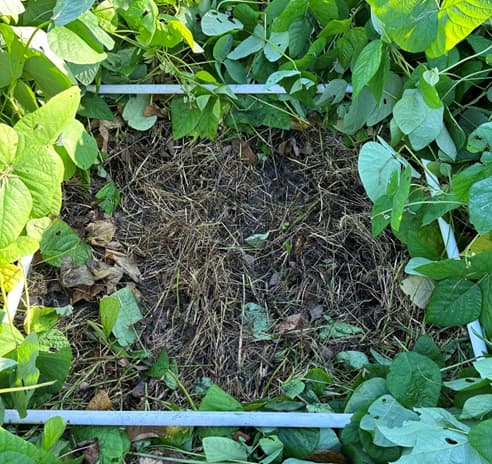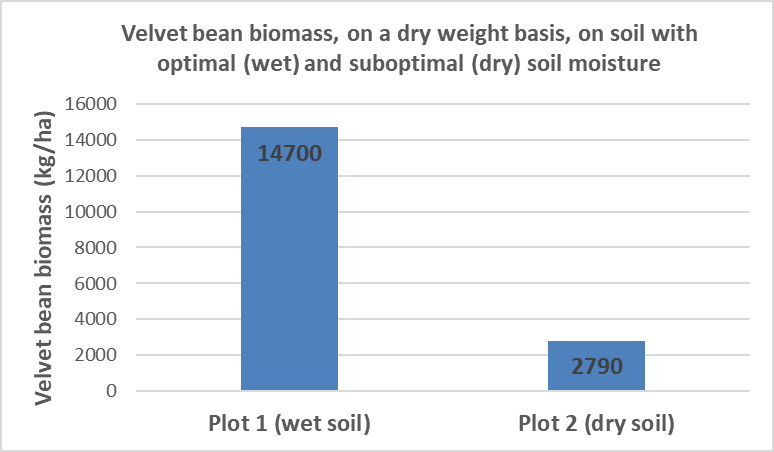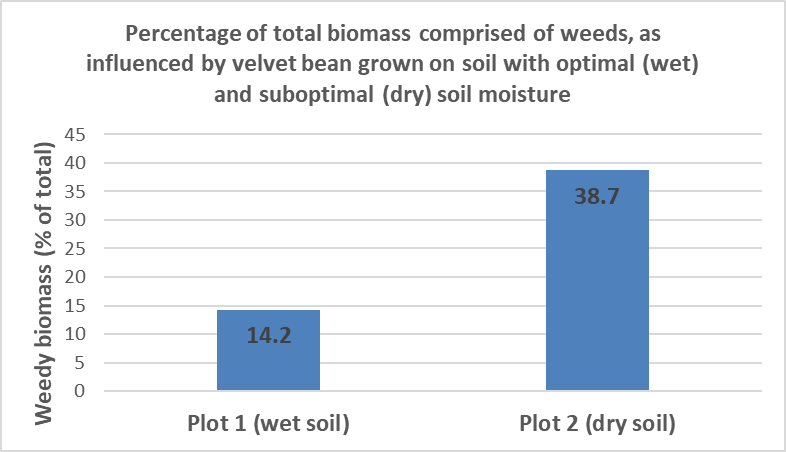No-Till Planting of Velvet Bean
By Guinevere Perry (PhD) and Brooke Lee
Velvet bean (Mucuna pruriens) grows well during Florida’s hot and humid summers. It is a vining cover crop, known for its ability to produce an abundance of biomass that quickly covers the ground and smothers weeds. With that in mind we selected velvet bean as a legume to plant as a fallow crop in our research plots.
We hypothesized that velvet bean could be sown directly into a field of grass and that it would, in time, cover the ground and overtop the grass. Benefits of sowing a cover crop into grass/weeds include:
- No need for tillage and related equipment to prepare the ground for seeding.
- Complements a no- or minimum- till farming approach.
- Provides weed control as the vines make a dense mat that blocks sunlight and growth for weeds/grass.
To establish the planting we began by mowing the plots at a height of 8 to 10 cm. The next day the seeds were jab-planted at a spacing of about 50 (between-row) X 20 (in-row) cm. The Haraka planter we used performed well in our sandy soil, resulting in nearly 100% emergence of velvet bean seedlings. It places seeds into the soil as you roll it through the field. It would take longer, but you could accomplish the same thing with a jab planter that plants one hole at a time. See the pictures below of the Haraka and single-hole jab planters.
Haraka (circular jab) planter

Single-hole jab planters

Planting occurred in April, before the onset of our rainy season, so the plots were watered as needed with overhead sprinklers. No fertilizer was applied.
Pictures below show how velvet bean grew over time, eventually providing complete cover and excellent weed suppression.
APRIL 20TH, 2023: shortly after mowing and planting

MAY 19th, 2023: Velvet bean growing with the grass and nutsedge, starting to gain a height advantage

JUNE 12th, 2023: Velvet bean vines spreading to cover the ground and overtopping the weeds

JUNE 19th, 2023: Velvet bean providing complete ground coverage, with vines climbing irrigation poles

Before receiving summer rainfall, we relied almost completely on overhead irrigation. Velvet bean did not grow as well near edges of the plots that received less water from the sprinklers. This created an opportunity to measure velvet bean growth and weed suppression in both scenarios (optimal and sub-optimal velvet bean growth).
Before the velvet bean flowered, while the vines were still growing rapidly (in July), we cut biomass from a square meter in each of two plots. For each sampling, we separated the grass/weeds from the velvet bean, dried the velvet bean and weedy biomass, and recorded dry weights. Results are shown below on a per hectare basis.
Square meter sampling area

CONCLUSION:
Velvet bean provided adequate cover to suppress weed growth. In addition to weed suppression, an abundance of biomass has implications for soil improvement, if the biomass is left in the field. If the vines contain 2% nitrogen for example, plot 1 biomass (14,700 kg/ha) would contain the equivalent of 294 kg/ha (14,700 X 0.02). However, this only occurred with adequate soil moisture. Results show, therefore, that velvet bean sown into grass, with no tillage prior to planting, can succeed as long as it has enough moisture.

